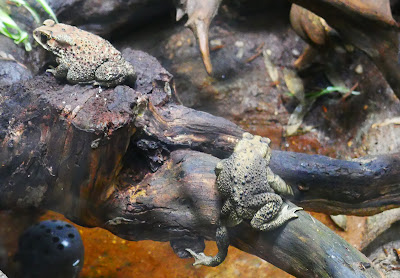I love Herpetariums. I have strong opinions about them. Some zoos have crappy ones: Richmond Metro Zoo, Memphis Zoo, Little Rock Zoo, Detroit Zoo. Some Zoos are doing the best they can: Lehigh Valley Zoo, Maryland Zoo, Turtle Back Zoo. Some zoos have amazing ones: St. Louis Zoo, Toledo Zoo, Virginia Zoo, Denver Zoo. But NO ZOO has one with a rich a story as the Philadelphia Zoo's. And I love to tell it.
It begins with a man named Roger Conant who went from taking a job at a local zoo for cash fresh out of high school, to becoming the foremost herpetologist of his generation. His second job was curating reptiles at the Toledo Zoo and it corresponded with the WPA creation of a range of new structures at the zoo including a Reptile House. While there, he used his proximity to the University of Michigan in Ann Arbor to make lifelong connections with other herpetologists working and studying at one of the leading programs in the nation. Among his many accomplishments was authoring "Peterson's Field Guide to Amphibians and Reptiles of Eastern and Central North America" which first came out in 1958 and instantly became the standard guide for professional and amateur herpetology enthusiasts.
He joined the staff of the Philadelphia zoo in 1935 as its Curator of Reptiles. 32 years later he was named director of the entire zoo. During this time he designed the Reptile house incorporating many of the principles of animal husbandry that he had learned and perfected in a career spanning some 42+ years. The building opened in 1972. Dr. Conant retired from the zoo the following year making the Herpetarium a mix of his parting gift to the Philadelphia Zoo and the crowning achievement of a life spent discovering and teacher others about the world of Reptiles and Amphibians. He continued exploring and writing and discovering new species up until his death in 2013 at the age of 94.
Every time I enter, I feel like I'm in a sacred space. A landmark in the world of public herpetariums. I am always struck by the naturalistic spaces and the inclusion of both live plants and water features. The only drawback is that habitats that might have seemed generous in 1972, not often feel more like adequate. In 2006, the space was shuttered to the public for a top to bottom renovation of HVAC, Electrical and plumbing systems along with repairs and upgrades to any of the habitats. Though most of the work was done on systems not visible to the public, the changes have provided stability and greater comfort for the animals that call the place home.
Not to put too fine a point on my love of this place, but of the four zoos I visited I took a total of 40 photos at Elmwood Park Zoo in Norristown, 67 photos at Lehigh Valley Zoo outside of Schnecksville, and 70 photos at Brandywine Zoo in Wilmington, Delaware. I took 87 photos in the Herpetarium alone at the Philadelphia Zoo. So let's see what caught my fancy during this visit.
We truly live in interesting times.



















No comments:
Post a Comment